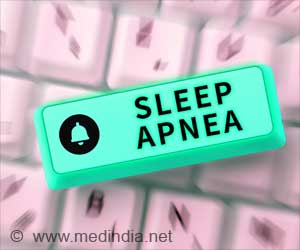
Esther Y. Yoon, M.D., M.P.H., and colleagues of the University of Michigan, Ann Arbor, examined echocardiogram use in adolescents and compared it with EKG and renal ultrasonography use in an analysis of administrative claims data from the Michigan Medicaid program from 2003 to 2008.
There were 951 adolescents with "essential" hypertension (i.e., the cause is unknown) who had antihypertensive pharmacy claims: 24 percent (226) had echocardiograms; 22 percent (207) had renal ultrasonography; and 50 percent (478) had EKGs, the results indicate.
"Our study describes for the first time, to our knowledge, equally low levels of obtaining echocardiograms and renal ultrasonography, which are recommended by national hypertension guidelines, by adolescents with essential hypertension," the authors note. "In contrast, we found that one-half of adolescents with essential hypertension had at least one EKG during the study period, a diagnostic test that is not recommended by pediatric hypertension guidelines but one that is recommended for adults with hypertension."
Boys, younger adolescents, those who had EKGs and those who had renal ultrasonography were more likely to receive echocardiograms compared with girls, older adolescents, and those who did not have EKGs or renal ultrasonography.
The authors suggest that the patterns of EKG and echocardiogram use in their study raises questions "about the level of familiarity, awareness or agreement with pediatric hypertension guideline recommendations and the rationale behind these recommendations."
Advertisement
(Arch Pediatr Adolesc Med. Published online July 23, 2012. doi:10.1001/archpediatrics.2012.1173. Available pre-embargo to the media at http://media.jamanetwork.com.)
Advertisement
Editorial: More Questions than Answers About Hypertension in Youths
In an editorial, Sarah D. de Ferranti, M.D., M.P.H., of Boston Children's Hospital, and Matthew W. Gillman, M.D., S.M., of Harvard Medical School, Boston, write: "The answers to the many questions raised here are unclear, pointing to the need for more information about the extent to which the BP [blood pressure] guidelines overall, and recommended diagnostic testing in particular, are implemented."
"It is important to get these answers," they continue.
"Future revision of the guidelines will require not only updating the evidence base for what should be done in ideal circumstances, but also what can be done in the real world given the range of possible health care provider, patient and payor facilitators and barriers to implementation," they conclude.
(Arch Pediatr Adolesc Med. Published online July 23, 2012. doi:10.1001/archpediatrics.2012.1503. Available pre-embargo to the media at http://media.jamanetwork.com.)
Editor's Note: The authors made financial disclosures. Also, de Ferranti's work is supported by grants from the National Institutes of Health and funding from the Boston Children's Heart Foundation. Gillman's work is funded in part by a grant from the National Heart, Lung and Blood Institute. Please see the article for additional information, including other authors, author contributions and affiliations, financial disclosures, funding and support, etc.
Source-Eurekalert













